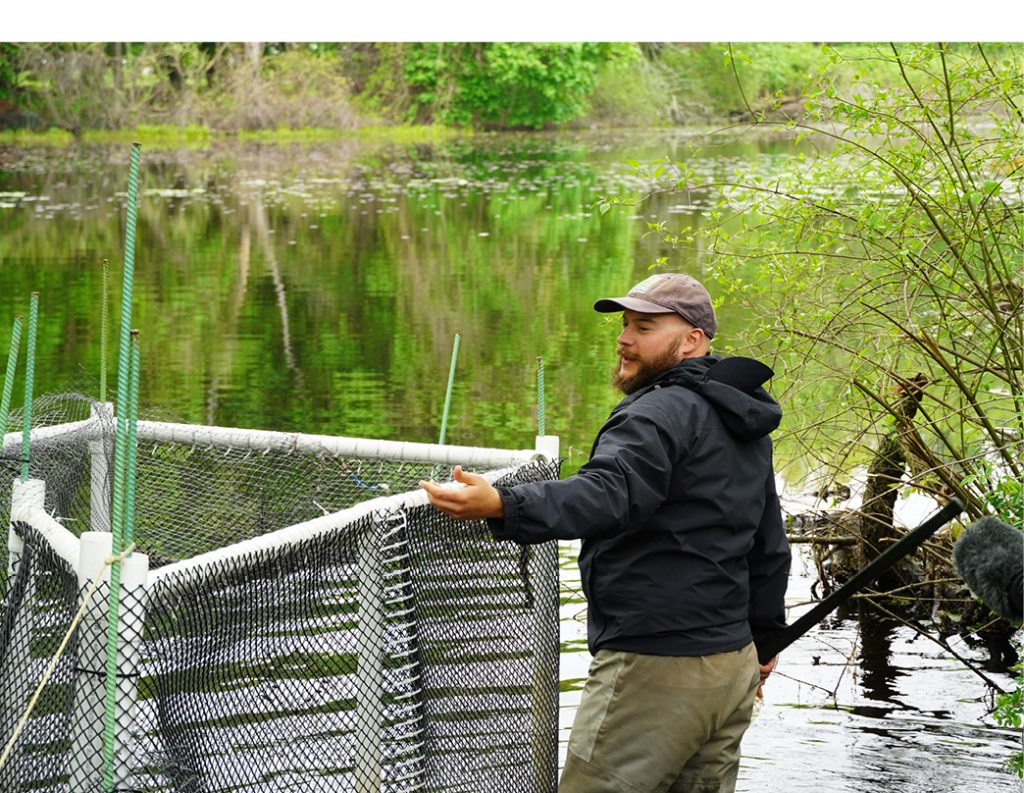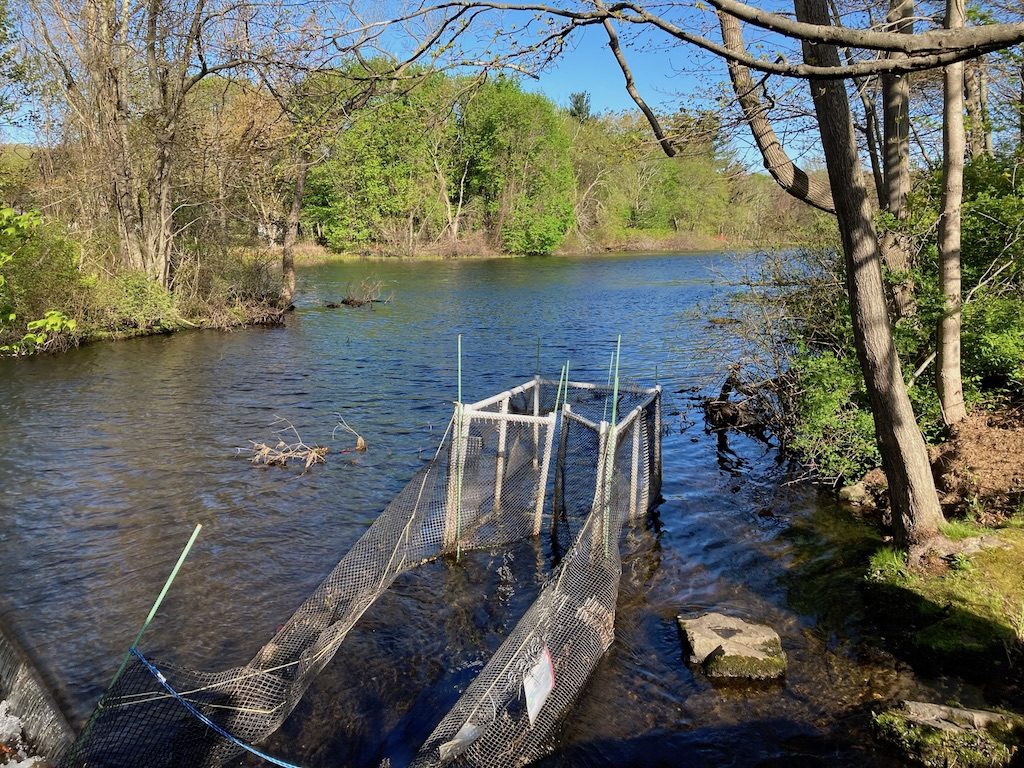By Melissa Pappas, Save the Sound Ecological Communications Specialist
Not too long ago, millions of river herring swam through Connecticut’s rivers each spring. These silver highways of fish making their way back to the place they were hatched were showing signs of rebounding after decades of decline. Last year, Jon Vander Werff, Save the Sound’s fish biologist, counted almost 200 alewife, the larger of the two species of river herring, in a trap at Konold’s Pond on the West River. This year, he counted three.
“After monitoring for years and seeing higher numbers of individual fish and higher biodiversity at specific dam removal sites, I was really taken by complete surprise when so few fish returned to my research sites this year,” said Vander Werff.

John Vander Werff, Save the Sound’s fish biologist, checks an alewife trap at Konold’s Pond on the West River.
This two percent return was not unique to the West River. There was a similarly low return at the fishway at Mill Brook in Old Lyme with a total of 3,944 fish counted this year compared to nearly 40,000 two years previous. Data from across the state from over twenty state-monitored traps in both free-flowing and dammed rivers shows the same trend – 300,000-400,000 alewife were missing from this year’s runs compared to 2020. “My question is, where did those fish go?” wondered Kevin Job, Connecticut state fish biologist.
The numbers have been bad before. A similar drop in alewife passage numbers was recorded in 2015, hitting a low point at many runs across the state. That alarming number spurred continued efforts to remove barriers and restore habitats. Save the Sound removed the dam at Pond Lily downstream of Konold’s Pond and saw the fish return double in just two years. To further increase that number, the state and other organizations improved habitats through fishway constructions and dam removals, stocked rivers to boost the population, and established more stable water levels through improved water management and downstream fish passage operations.
“In Maine, we have watched runs build quickly from hundreds of river herring to millions in less than ten years following dam removals and adult transplantations in their rivers,” said Job. “In response, CT DEEP followed suit with an aggressive stocking program, and we appeared to be well on our way to similar results following implementation in 2017. Stocking efforts at Mill Brook in Old Lyme helped 134 fish in 2015 turn to 37,881 fish in 2020, and we expected this number to keep climbing.”
But the counts went in the opposite direction in 2022, which was a surprise knowing how resilient these fish are. “We gave them everything we had and they were responding accordingly as results elsewhere suggested they would, and just like that they appear to have disappeared,” said Job. “It was as if the run disappeared after five years of positive results even with all things pointing to a successful year in 2022.”
With many barriers removed and ongoing habitat restoration projects in the inland rivers and streams, we have to start looking elsewhere for an explanation for the drop. Job, Vander Werff, and scientists at Save the Sound will work through the historical and current data across the region to find out if the disappearing fish is an anomaly or part of a larger trend.

“The major thing I would be interested in knowing — and it’s not my specialty — is what’s going on in the open ocean with these fish when they’re not in the rivers?” said Vander Werff. “Is it a fisheries management issue? Is it an oceanic conditions issue?”
So, why should you care about 300,000 missing fish? You’d be surprised by the impact alewife have on everything from your seafood consumption to recreational hobbies such as fishing and birding. “All of these big game fish that sport fishermen like, those are decreasing because there’s not enough forage fish,” said Vander Werff.
And that’s true for many others that rely on alewife including osprey, great blue heron, bald eagle, river otter, and racoon. Alewife may be one of the most important species of migratory fish due to its key role in the food chain. They are surprisingly resilient fish that find ways to spawn in and adapt to polluted, dammed, and drought-stricken rivers.
“We still have had alewife holding on,” said Job. “They are an incredibly productive fish that has evolved to handle poor year classes, heavy predation, and drought. They are prolific spawners and have the ability to snap back from near extinction. These are species that survived the industrial revolution’s pollution and damming of rivers. These are a species that, when given a chance, can do amazing things.”
As the region’s data is pieced together, we aim to provide answers to some of the questions posed here. Stay tuned for updates on our blog at savethesound.org. ■
